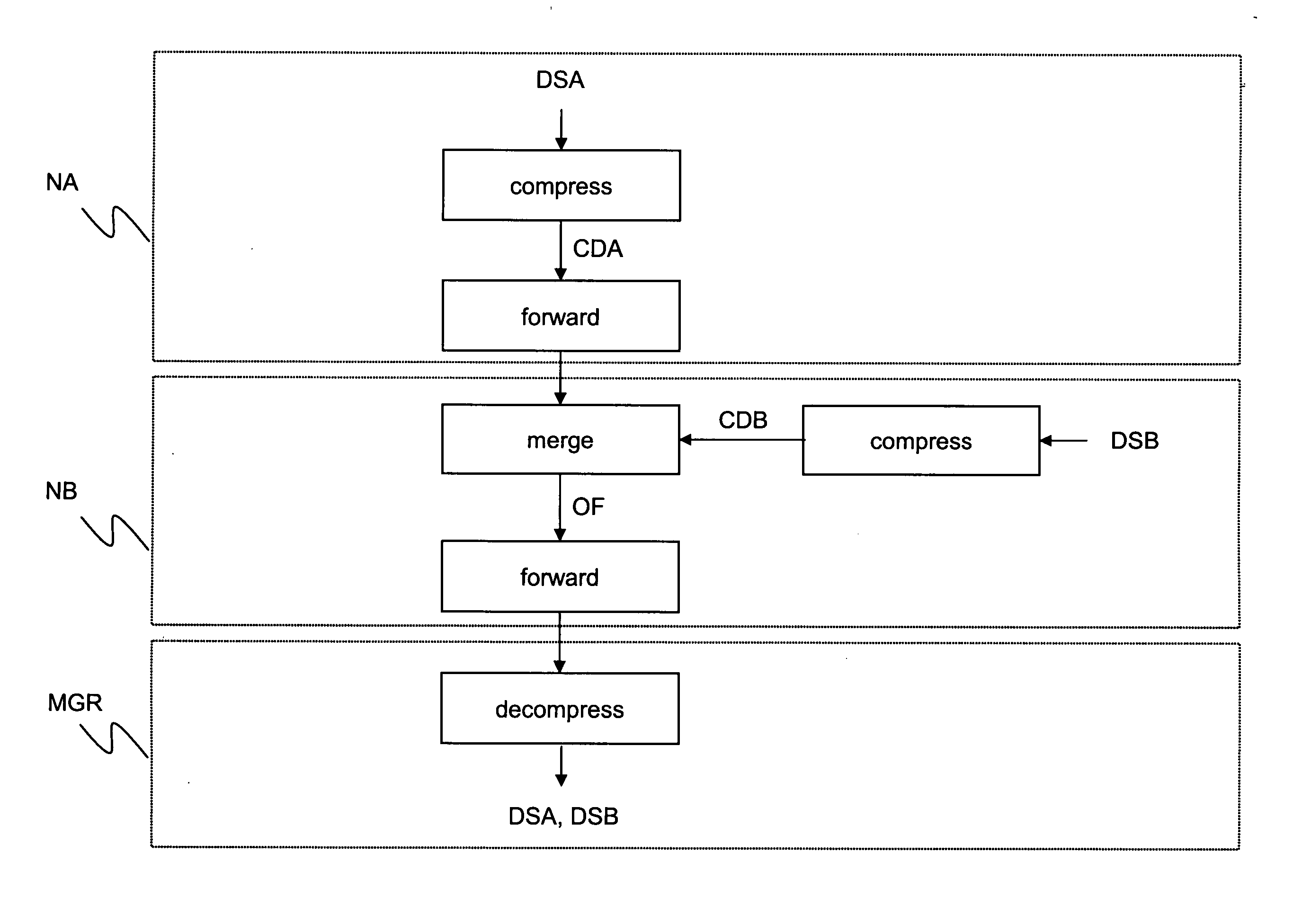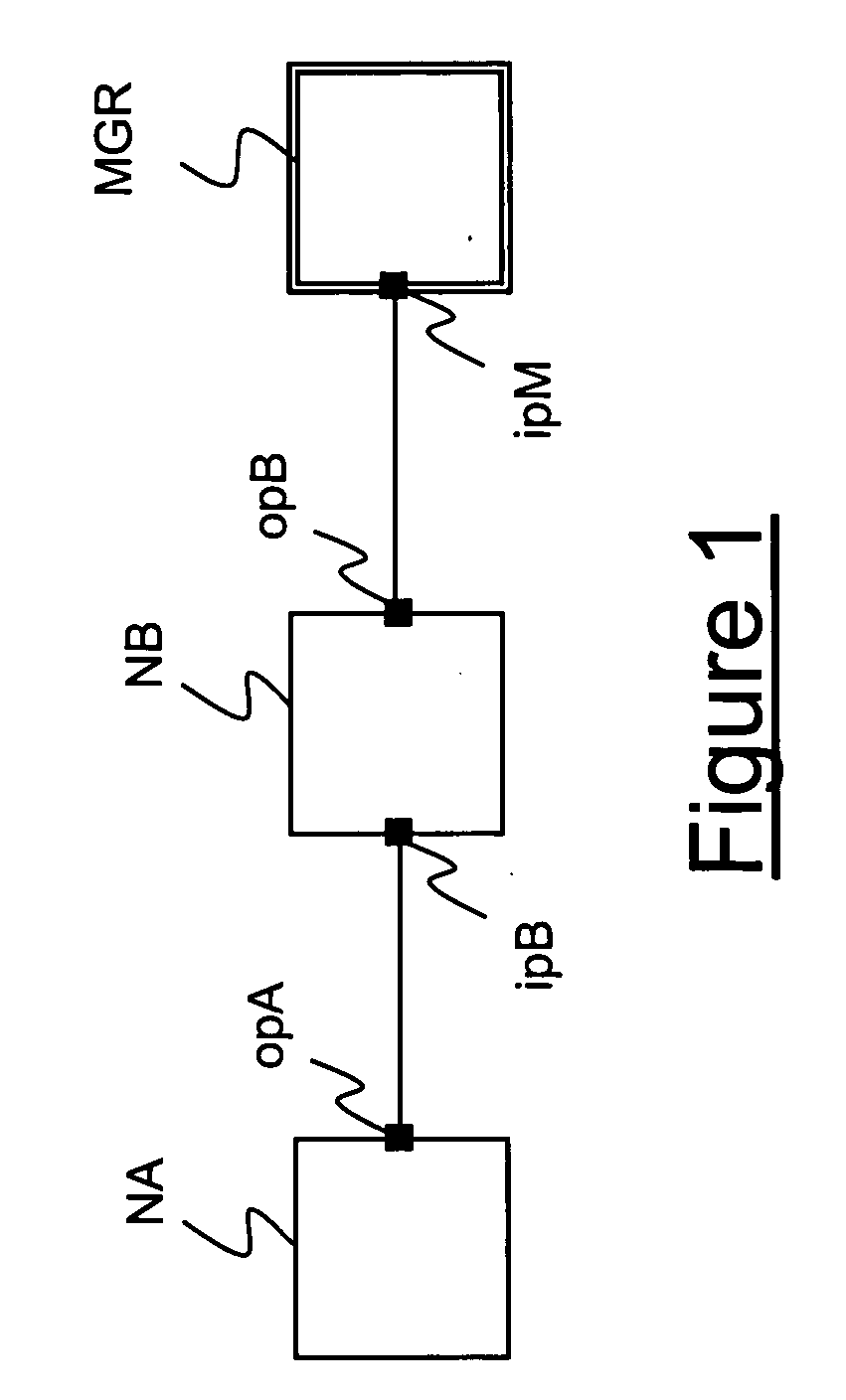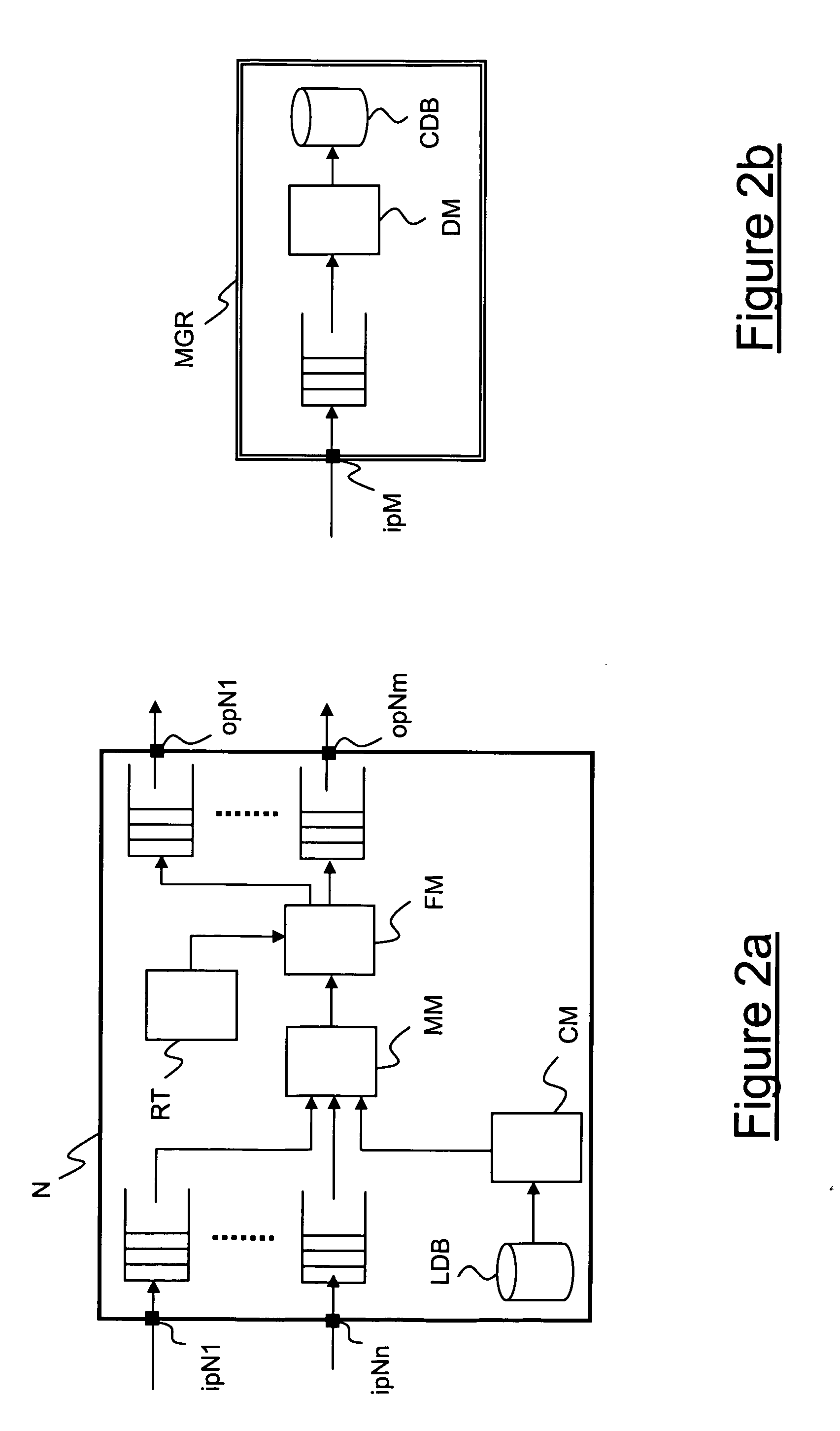Data collection from network nodes in a telecommunication network
a network node and data collection technology, applied in the field of collecting data from network nodes in telecommunication networks, can solve the problems of increasing the average size of data sets, narrow dedicated channel bandwidth, and more complex, and achieve the effect of reducing the overall data collection tim
- Summary
- Abstract
- Description
- Claims
- Application Information
AI Technical Summary
Benefits of technology
Problems solved by technology
Method used
Image
Examples
Embodiment Construction
[0032]FIG. 1 schematically shows a simplified telecommunication network wherein the network according to the present invention could be implemented and easily explained.
[0033] The network of FIG. 1 comprises a node NA, a node NB connected to the node NA and a network manager MGR (for instance, the NOC of an SDH network), which is connected to the node NB.
[0034] Square markers indicate the input ports and the output ports of each node. For clarity reasons, FIG. 1 only shows the input / output ports which are relevant to the present invention. In particular, the node NA has an output port opA, which is connected to an input port ipB of the node NB. Similarly, the node NB has an output port opB which is connected to an input port ipM of the network manager MGR.
[0035] The network of FIG. 1 is only exemplary; indeed, the method of the invention can be applied to networks comprising any number of nodes, arranged according to any topology (bus, ring, mesh), as it will be shown herein afte...
PUM
 Login to View More
Login to View More Abstract
Description
Claims
Application Information
 Login to View More
Login to View More - R&D
- Intellectual Property
- Life Sciences
- Materials
- Tech Scout
- Unparalleled Data Quality
- Higher Quality Content
- 60% Fewer Hallucinations
Browse by: Latest US Patents, China's latest patents, Technical Efficacy Thesaurus, Application Domain, Technology Topic, Popular Technical Reports.
© 2025 PatSnap. All rights reserved.Legal|Privacy policy|Modern Slavery Act Transparency Statement|Sitemap|About US| Contact US: help@patsnap.com



